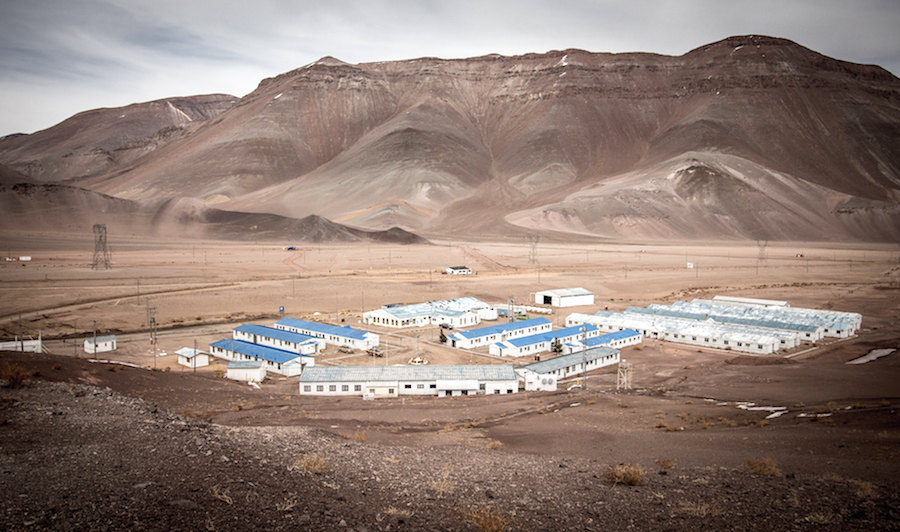
Kinross Gold‘s Lobo-Marte gold project in northern Chile could produce a total of 4.5 million oz. gold over a 15-year mine life at an estimated cost of $995 million, according to a prefeasibility study (PFS) released Wednesday.
The nearly $1-billion price tag for the project, located in the Maricunga mining district, includes a $230-million contingency.
The project would feature open pit mining at two deposits with an average strip ratio of 2.2, heap-leach recovery and a SART (sulphidization, acidification, recycling and thickening) plant.
Mining would take place for 12 years, followed by three years of residual processing. Average all-in sustaining costs per oz. of gold at Lobo-Marte are estimated at $745; the gold recovery rate is expected to be 71%.
The company plans to start a feasibility study on Lobo-Marte later this year
The project’s economic returns are highly sensitive to the gold price. At Kinross’s reserve price of $1,200 per oz. gold, the project’s net present value (NPV) is estimated at $150 million and its internal rate of return (IRR) is only 7%. At the consensus long-term price of $1,500 per oz. gold, the NPV rises to $770 million and the IRR to 14%. And at the spot price of $1,800 per oz. gold, the NPV increases to $1.4 billion and the IRR to 21%.
The NPV is based on a 5% discount rate, calculated from Jan. 1, 2024.
The PFS contemplates project construction beginning in 2025, with first production following in 2027. Kinross anticipates mining at Lobo-Marte would follow a restart at the nearby La Coipa mine, located 50 km northwest.
“The Lobo-Marte project provides Kinross with an excellent, organic development option that has attractive all-in sustaining costs and offers substantial upside leverage to the gold price, without increasing project cost requirements and risk,” said J. Paul Rollinson, Kinross president and CEO, in a release.
“The project represents a potential synergistic, long-term mine life extension in a favourable mining jurisdiction and delivers a significant 6.4 million ounce addition to our current gold reserve estimates, increasing the company’s overall reserve mine life. As we move forward with the feasibility study for this longer-term project, we will continue to prioritize balance sheet strength and disciplined capital allocation.”
As part of the study, the company reported reserves at Lobo-Marte for the first time. Probable reserves stand at 146.8 million tonnes grading 1.36 g/t gold for 6.4 million contained ounces. The figure increases Kinross’s reserves by 25%.
The company plans to start a feasibility study on Lobo-Marte later this year, and to have it completed in the fourth quarter of 2021.
It says a construction decision will be made based on several factors, including the gold price and price projections, expected economic returns, permitting and Kinross’s capital priorities. Kinross acquired the project in 2009 from previous owners Teck Resources and Anglo American.
In February, Kinross announced it will go ahead with a restart at La Coipa, which it expects to produce 690,000 gold-equivalent oz. from 2022 to 2024. Existing infrastructure at the camp will be refurbished and the mine fleet from its nearby Maricunga operation, which was recently placed on care and maintenance, will be redeployed to the site. Initial capital costs are pegged at $225 million.
Midday Wednesday, Kinross’ stock was down nearly 1.8% on the TSE. The company has a C$12.9 billion market capitalization.
(This article first appeared in the Canadian Mining Journal)